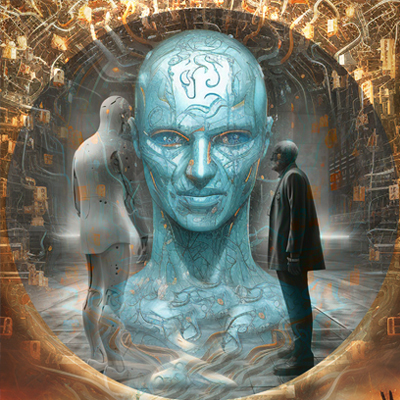Wavefunction Matching: A Breakthrough in Quantum Calculation Accuracy
Jun. 19, 2024. 2 min. read.
2 Interactions
Can wavefunction matching simplify complex quantum calculations and enable accurate predictions of atomic nuclei properties? Researchers may find a way to significant breakthroughs in quantum computing.
Introduction
Picture a world where we can peer into the tiniest particles that make up our universe, understanding their behaviors and interactions with stunning precision. This is the realm of quantum physics, a field that delves into the mysteries of protons, neutrons, and other minute particles known as “quantum many-body systems.” To unlock these secrets, scientists prefer to use an approach called “ab initio,” which means starting from the most basic principles and using them to derive the behavior of the system. Within this approach, the Quantum Monte Carlo Simulation plays a crucial role, using randomness to help make sense of complex calculations, via simulating a large number of possible ways a system may evolve and probabilistically combining the results. However, in many applications this technique has faced a major technical challenge: the “sign problem,”
This issue arises when positive and negative results offset each other, leading to erroneous conclusions. To tackle this challenge, researchers devised a solution known as “Wavefunction matching.” Imagine a complex puzzle simplified into a more manageable form—this is akin to what Wavefunction matching accomplishes. It involves mapping the intricate problem onto a simpler model devoid of oscillations, and any discrepancies are resolved using perturbation theory. By streamlining the problem and addressing differences, accurate calculations become feasible.

Applying this technique, researchers successfully computed the masses and radii of all nuclei up to a mass number of 50, aligning closely with real-world measurements. Furthermore, the utility of Wavefunction matching extends beyond rectifying Monte Carlo Simulations—it holds promise in the realm of quantum computing. By enhancing calculation accuracy and reliability, it serves as a valuable tool for understanding how nature actually works and applying those insights to problems in chemistry, physics, and quantum computing.
As Dr. Meißner suggests, this method’s versatility spans both classical and quantum computing domains, ushering in a new era of precision and reliability in calculations. This advancement isn’t just confined to rectifying existing methodologies; it holds the potential to revolutionize quantum algorithms, paving the way for swifter computations and superior outcomes across various quantum applications.

Conclusion
Richard Feynman said, ‘Any field for which there is a prize that is defined is a field that already has its best days behind it. It’s a field that barely has a name and is going to have the most fertile moment.’ Wavefunction matching is a good example of such a fertile moment in a research area still in its most exciting, early, innovative phase.
Let us know your thoughts! Sign up for a Mindplex account now, join our Telegram, or follow us on Twitter.

.png)

.png)


.png)




0 Comments
0 thoughts on “Wavefunction Matching: A Breakthrough in Quantum Calculation Accuracy”